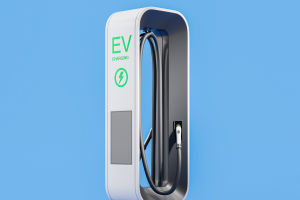
As the world moves toward more sustainable practices, the shift to electric mobility stands out as one of the most significant changes. More individuals are opting for electric vehicles (EVs), drawn not only by the reduction in emissions but also by the potential financial savings.
A common question that arises is about the cost of charging an electric vehicle at home. Understanding the factors that influence this cost is crucial for making informed and cost-effective decisions in the long term.
Factors Affecting Home Charging Costs
The cost of charging an electric vehicle at home can vary depending on several factors. Some of the key elements that affect the price include electricity rates, vehicle efficiency, and the type of charging setup used. Understanding these aspects can help optimize the cost and make the transition to electric mobility more economical.
Price of Electricity
Electricity prices are not uniform; they fluctuate depending on the region and energy provider. Local regulations, taxes, and policies can all influence the cost of electricity. In general, the average domestic electricity price in many countries can range between 0.20 to 0.25 euros per kilowatt-hour (kWh), although it can be higher or lower depending on various factors.
Vehicle Efficiency
The efficiency of an electric vehicle plays a crucial role in determining charging costs. Efficiency is measured in kilowatt-hours (kWh) per 100 kilometers.
A more efficient vehicle requires less energy to travel the same distance, thereby reducing charging costs. For instance, a small electric car may consume around 15 kWh per 100 kilometers, while an electric SUV could consume 20 kWh or more, resulting in higher charging costs for the larger vehicle.
Time of Use and Energy Tariffs
Some energy providers offer different rates depending on the time of day, encouraging users to charge during off-peak hours when electricity is cheaper. For example, peak hours, typically in the middle of the day, come with higher electricity costs, while off-peak hours, such as late evenings or weekends, offer lower rates.
By scheduling charging during these more economical hours, users can significantly reduce their electricity expenses.
Using a Wallbox for Faster and Safer Charging
While it is possible to charge an electric vehicle through a standard electrical outlet, using a wallbox is a more efficient and safer option. A wallbox is a dedicated home charging station that can charge an electric vehicle more quickly and securely.
Standard outlets usually provide 2.3 kW of power, meaning that charging a 50 kWh battery could take more than 20 hours. In contrast, a wallbox can provide power levels ranging from 3.7 kW to 22 kW, allowing for faster charging times—up to 7 hours with a 7.4 kW wallbox.
Cost Calculation: How to Estimate the Price of Charging
To calculate the cost of charging an electric vehicle at home, the following steps can be helpful:
1. Know the Price of Electricity: The price of electricity depends on the energy provider and contract terms.
2. Determine Vehicle Efficiency: Efficiency is expressed in kWh per 100 kilometers.
3. Calculate the Cost per 100 Kilometers: Multiply the vehicle’s efficiency by the cost of electricity per kWh.
Example:
If the vehicle consumes 15 kWh per 100 km, and electricity costs 0.22 €/kWh, the cost for 100 kilometers would be:
15 kWh/100 km × 0.22 €/kWh = 3.30 €
4. Calculate the Full Charge Cost: If the vehicle has a 50 kWh battery, the full charge cost would be:
50 kWh × 0.22 €/kWh = 11 €
By charging during off-peak hours, the cost could be reduced. For instance, if the rate drops to 0.18 €/kWh during off-peak times, the cost of a full charge would decrease to:
50 kWh × 0.18 €/kWh = 9 €
Benefits of Home Charging
Charging an electric vehicle at home offers several advantages, particularly in terms of cost savings, convenience, and flexibility.
Cost Savings
Charging at home is often more affordable compared to using public charging stations. By taking advantage of lower off-peak electricity rates, users can reduce their overall energy costs. Additionally, avoiding the need to pay for public charging services can lead to long-term financial savings.
Convenience and Flexibility
Home charging eliminates the need to plan trips around the availability of public charging stations. Users can simply park their vehicle at home, connect it to the charging station, and leave it to charge overnight.
Moreover, with the ability to schedule charging times, users can ensure that their vehicle is charged when it's most convenient for them. This flexibility enhances the overall user experience, making electric vehicle ownership even more attractive.
Environmental Benefits with Solar Energy
Utilizing solar energy for charging purposes can provide significant environmental and financial benefits. By installing solar panels, households can generate their own electricity, reducing reliance on the grid. Solar power can directly power the vehicle, lowering overall electricity costs and further supporting sustainable energy use. The extent of savings depends on the amount of solar energy generated and how much is used for charging.
To Conclude
Charging an electric vehicle at home is not only a practical and cost-effective solution, but it also aligns with the shift toward sustainable practices.
Understanding the factors that influence charging costs, such as electricity rates, vehicle efficiency, and the benefits of using a wallbox or solar power, can help maximize the savings and make the transition to electric vehicles more accessible for everyone. With increasing convenience and flexibility, home charging is a great option for those looking to embrace electric mobility.


